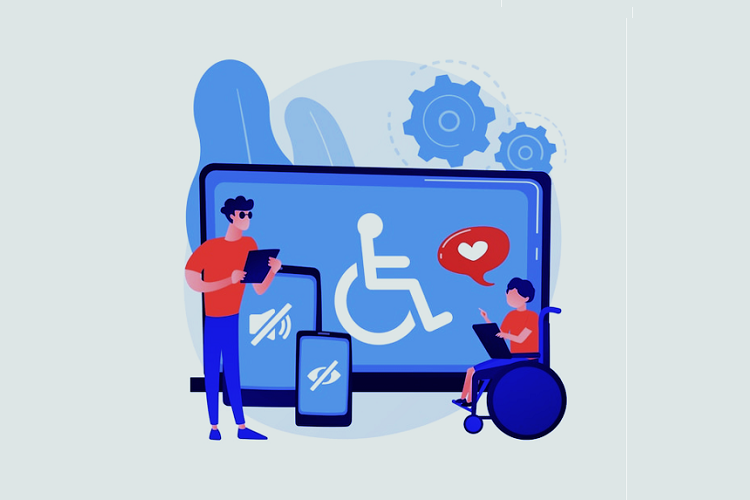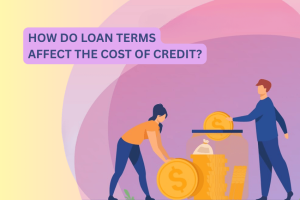The Internet has become the central hub for information, opportunities, services, and much more in the digital age. The web is designed to work for everyone, regardless of their hardware, language, location, software, or ability.
This is where web accessibility comes into play, a set of practices and principles to ensure that web applications are inclusive of all users. As per the reports published by Forbes, only 3.7% of websites are inclusive to all people as of 2023. Such a small fraction of compatible and inclusive websites online enlarges the gap between the users. Not only does it restricts content and services for people with disabilities, but it also limits the potential business opportunities and growth.
Top web development companies, thereby, strive to meet the accessibility goal by adding a diverse range of hearing, sight, movement, and cognitive abilities to support all individuals. If you are looking to design an accessible website, we have something that will surely help you in the process. Further in this article, we will discuss all about web accessibility and its importance. Along with this, we will also explore the best practices and key considerations for the same.

What is Web Accessibility?
While problems like poorly designed web pages, slow-loading websites, or an unfriendly interface can cause slight inconvenience for us, for people with disabilities, these can completely restrict their internet usage.
Web Accessibility aims to create web content, design, and specialized tools that can be used by every user, irrespective of their ability. Websites using improvised tools and technologies are developed to aid the understanding, contribution, interaction, and navigation of a person with disabilities. By implementing web accessibility, developers aim to remove the barriers that are caused by auditory, physical, cognitive, or neurological disabilities.
In order to make your website inclusive of all users, you must aim to build accessibility at the initial stages of development and design rather than trying to fit it in as an afterthought. Most aspects of accessibility are fairly easy to comprehend and implement. While some of them require complex knowledge to implement.
What is the Significance of Web Accessibility?
Web accessibility is not only legally and morally ethical but also a sound business strategy to improve customers’ experience. The best web development companies include accessibility features in their web pages due to the following reasons:
- Inclusivity
With an accessible website, developers can create an inclusive platform for all users, irrespective of their abilities. Web accessibility allows all users to participate equally in the growing digital world by lifting the barriers to information, services, and opportunities.
- Legal and Ethical Obligations
With the growing demand of web applications, many countries have implemented strict laws that command web accessibility for both public and private sector organizations. By adhering to these rules, businesses can avoid strict legal actions against them.
- Business Growth
Apart from fulfilling legal responsibilities, adhering to web accessibility features can also be extremely helpful in your business expansion. Developing an inclusive platform expands your chances of capturing a larger consumer base.
What are the Types of Disabilities and Web Accessibility Challenges?
Web accessibility is highly beneficial in overcoming the barriers created by multiple disabilities like
- Visual disabilities- including blindness, poor eyesight, color blindness, etc.
- Auditory disabilities- including complete and partial hearing impairment
- Cognitive and Neurological disabilities- including dyslexia, PTSD, and other learning difficulties or memory issues
- Physical and Mobility disabilities- including muscle slowness or loss of muscle control that can possibly be caused due to stroke, cerebral palsy, etc.
Exploring the Broad Scope of Web Accessibility
The scope of web accessibility can be understood as the range of elements and the important considerations that are required to make diverse digital content accessible to all individuals. From website design to future maintenance, accessibility features should be managed at all stages.
It encompasses the complete design, development, and implementation process of practices that ensure inclusivity for individuals with special abilities as well. Web accessibility aims at creating a dynamic digital experience to remove barriers in perception, navigation, and interaction with web content.
The functionality of web accessibility goes beyond an individual website, it includes the following aspects –
- Motor Accessibility
Designing a website that is simple to use and can be navigated with additional input devices such as keyboards, voice commands, and others are accessible to all individuals irrespective of their disabilities.
- Visual Accessibility
Offering an alternative to written text, like audio descriptions, can help users with visual disabilities to navigate through the information easily.
- Auditory Accessibility
Audio content like video can be supported with relevant transcripts or captions to ensure that users with hearing impairments are able to perceive and understand the content effectively.
- Accessibility Policies and Guidelines
Adhering to the set rules and policies or the Web Content Accessibility Guidelines(WCAG) can be beneficial for both businesses and users. Complying with the web design per the guidelines will help businesses manage comprehensive accessibility practices.
- Cognitive Accessibility
A website with clean and structured content is more readable and simple to comprehend. Minimizing the clutter and reducing distractions on the web page is highly helpful for individuals with learning difficulties to thoroughly understand and easily read the content.
Four Main Principles of Web Accessibility
Some of the factors that you must consider in order to ensure an accessible website are listed below:
- Perceivable
A developer must ensure that all the content and information posted on the website is simple to understand and easy to perceive by all users. Adding well-contrasted images and texts will ensure that the content is readable by users with visual disabilities as well. Along with this, adding captions with videos, texts with images, and transcripts with audio content will ensure more comprehensive content.
- Operable
Offering an interactive and engaging website will help you retain more users for longer. Along with this, multiple elements such as controls, buttons, and other navigation features should be operable and functional. Users should be capable of operating these elements by physically swiping, clicking, or tapping on them. Similarly, for users who cannot operate in this manner, voice commands and other assistive devices can be used.
- Understandable
To ensure an inclusive website, developers must focus on using clear and relevant technology. A web page should be designed with readable patterns and formats. The aim should be to smoothen out the user experience by facilitating easy comprehension and understanding of the page.
- Robust
A web page packed with robust tools and technologies is extremely reliable in its working and utility. The robustness of the sites ensures that they can be used with assistive devices.
You must consider these principles when designing a website to make it usable for all customers. The lack of any of these four principles will make the website inaccessible to users with disabilities.
Understanding the Components of Web Accessibility
Web accessibility is an umbrella term that covers all aspects and elements of a website. Each element on the site should be interconnected and linked to create a comprehensive site that users of all abilities can access.
The major components of an accessible and inclusive web page include the following:
- Content
Content refers to the information published on the website, including texts, images, videos, audio, and more. This content is defined by a code, markup, or scripting language that offers a foundation for the structure and presentation of the site.
- User-Agents
User agents refer to a range of software that functions on behalf of users. Web browsers, mobile phone browsers, media players, and other assistive technologies.
- Authoring Tools
Authoring tools are used for creating and designing websites, such as code editors, blogs, content management systems, and more.
- Evaluation Tools
Evaluation tools are designed to help you review the efficiency and effectiveness of your accessibility attributes. These tools can evaluate the performance and track remediation efforts for the same.
How To Create an Accessible Website?
The aforementioned components and their collaboration ensure an accessible website. We have mentioned some basic guidelines to ensure your interface is designed with the best attributes and features.
- Text Alternatives
Text alternatives can convey the context and meaning of the visual content displayed on the site. The visual content information can be rendered into an electronic text that can fit the requirements of every user. For instance, braille devices are capable of reading textual information easily.
- Text transcripts and Captions
Diversified and engaging content can be limited for those with audio or visual impairments. Adding text transcripts and captions for recordings, videos, and other similar content can help overcome the limitations and ensure equal opportunities for all.
- Representation of Content
Content should be represented in a clean and clear format to ensure better readability and understanding. Along with this, users should also be able to manipulate the content as per their preferences. For instance, enabling options to read out the text, customizable themes and color contrasts, and more. The web page should also support a mobile-friendly interface for better use.
- Avoid Moving Content
Different users have different understanding and perceiving abilities. A web developer must adjust time-sensitive elements to ensure that all readers are able to read and understand it at their speed. Animated content and flashy images can be harmful to users with photosensitive disorders. Such content should either be avoided completely or displayed with a warning beforehand.
- Accessible Navigation
A user’s experience on the website is highly influenced by the ease of navigation and the quality of the interface. A systematically organized website will offer a decluttered platform for all users to explore freely. Understanding how users engage with site maps, search boxes, and drop-down menus can help you in designing a simple-to-navigate website.
Testing for Web Accessibility
Once you are done with developing and implementing all the strategies for a well-designed, accessible website, you should review your website for compliance with the set standards. Your website should be thoroughly examined at every step of designing and re-designing to ensure its relevance.
Apart from self-evaluation, developers can also use specific tools designed to determine if your site meets all the accessibility parameters and requirements. These tools are simple to use and can offer an overview of the complete functionality of your dashboard.
You can consider the following tips and tricks to simplify the process of testing your website for accessibility-
- Try navigating through keyboards
The best way to test a website’s accessibility is to put your mouse down and try to navigate through the web pages using keyboard keys only. You must ensure that you are able to navigate through all the features and elements of the website easily.
- Trial tests with users
Websites are designed to enrich the user experience and retain customers. Doing test trials with potential customers and engaging with their feedback will help you ensure the best accessibility features for the website.
- Ensure a valid HTML
Ensuring a valid HTML is extremely important to support assistive technologies. Many users can find it difficult to read with devices like screen readers if the HTML is inappropriate. Verifying your code with a validator will ensure smooth working of the site.
- Web accessibility tools to the rescue
A huge range of web-based software is designed to assist in the evaluation of accessibility. Tools like TAW, WAVE, sort site, etc. ensure that your website is designed as per the accessibility guidelines.
This process is critical for highlighting the shortcoming of your website in order to ensure full accessibility. Testing can determine how simple it is for users to navigate through the content, irrespective of their abilities. Effectively leveraging website accessibility will help you reach out to a larger audience and create a highly supportive and inclusive platform for them.
Wrapping Up
It is thereby established that Web Accessibility is an important factor in ensuring the equality and inclusivity of all users. With a wide range of considerations and components, web accessibility ensures that all users are given an equal platform to read and understand the content online.
Prioritizing accessibility benefits all, from people with disabilities to mobile and assistive technology users. Web development companies should thereby aim at creating an equitable platform ensuring information, services, and opportunities for all online users.
The quest for better accessibility is a mandate in today’s world that is run by the internet and its benefits are muti-fold. If your business is seeking to capture a larger market share and improve search engine friendliness, complying with the web accessibility strategies will guarantee success for the same.


